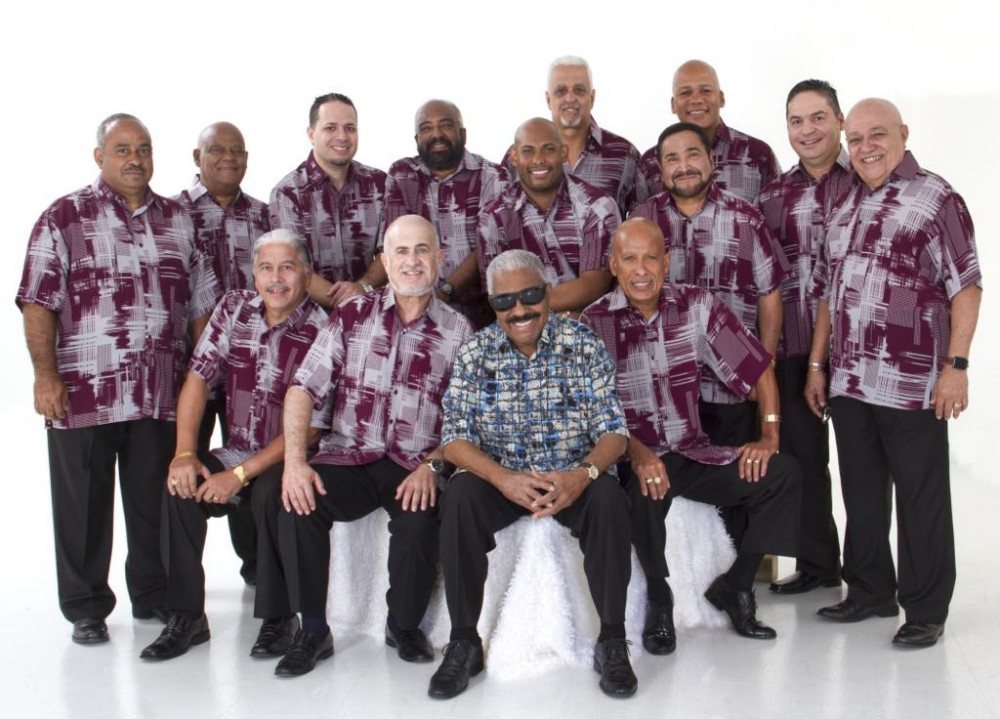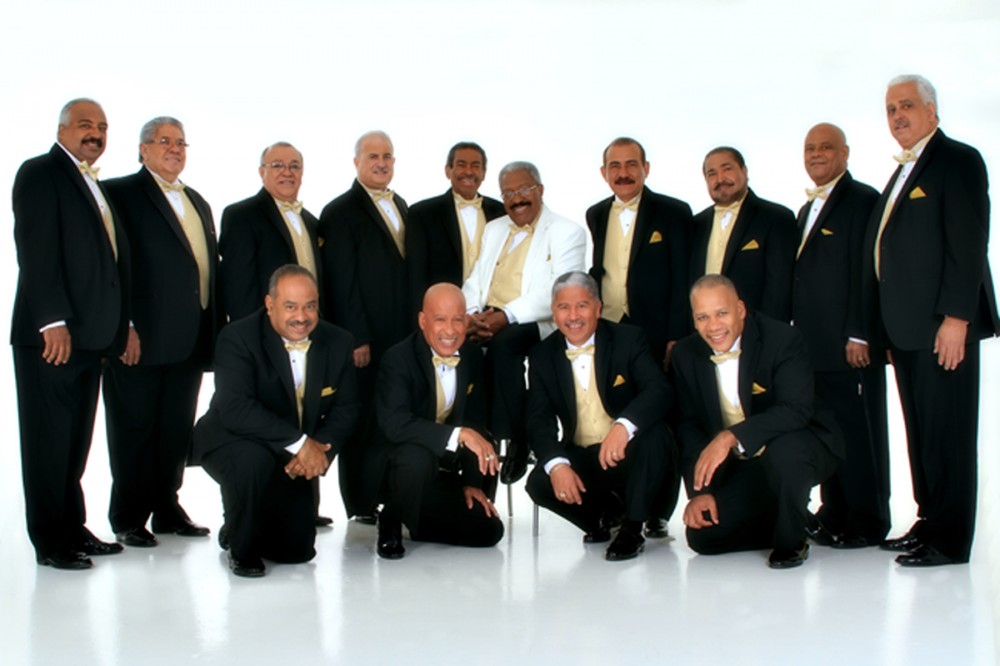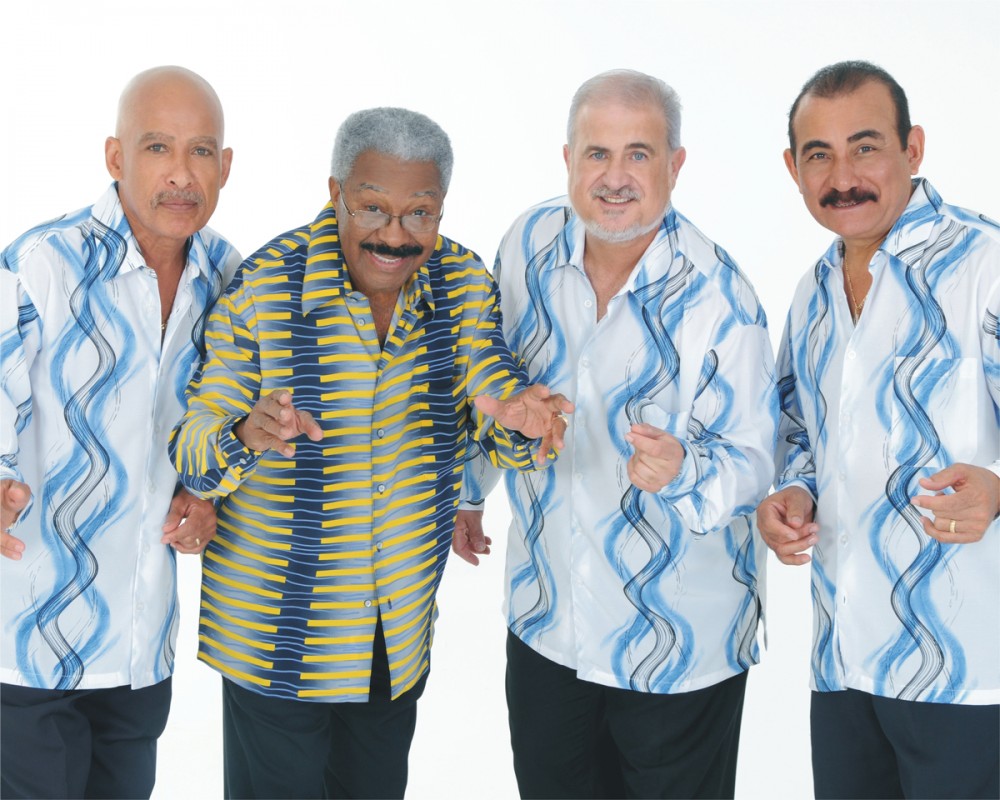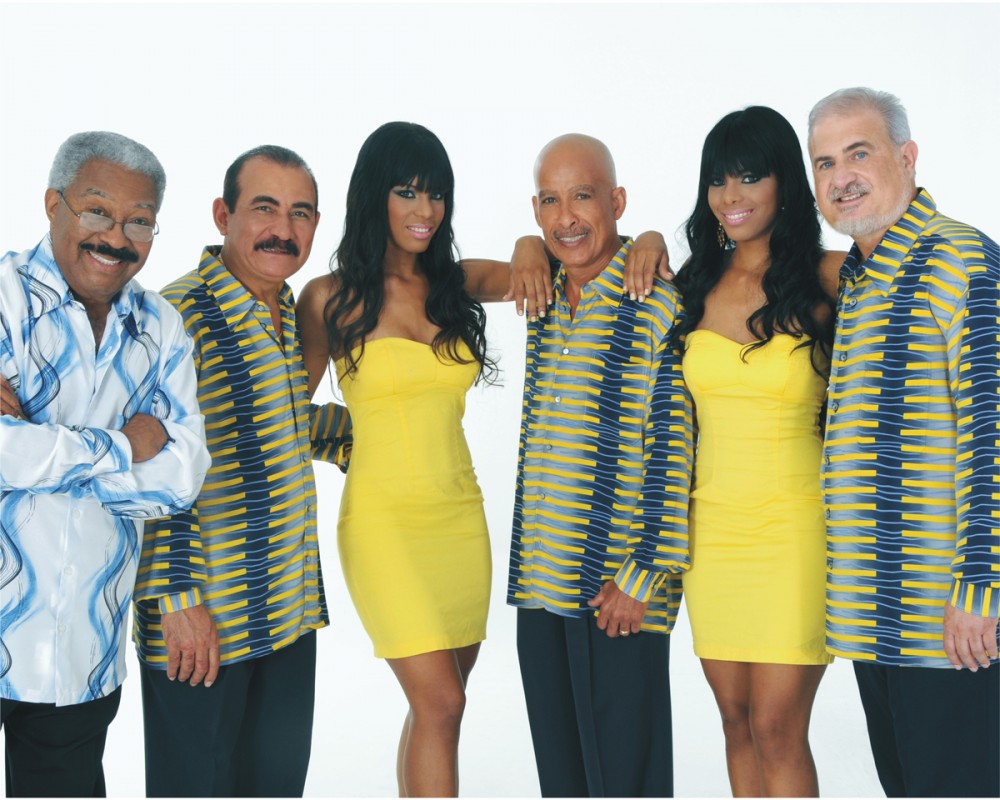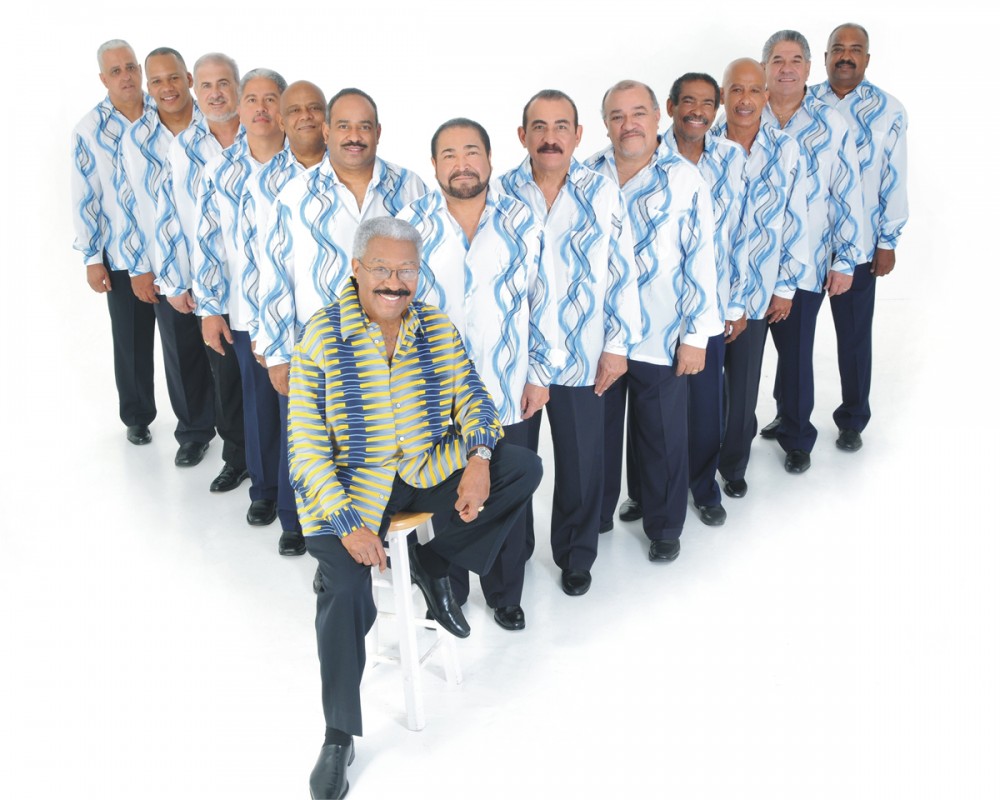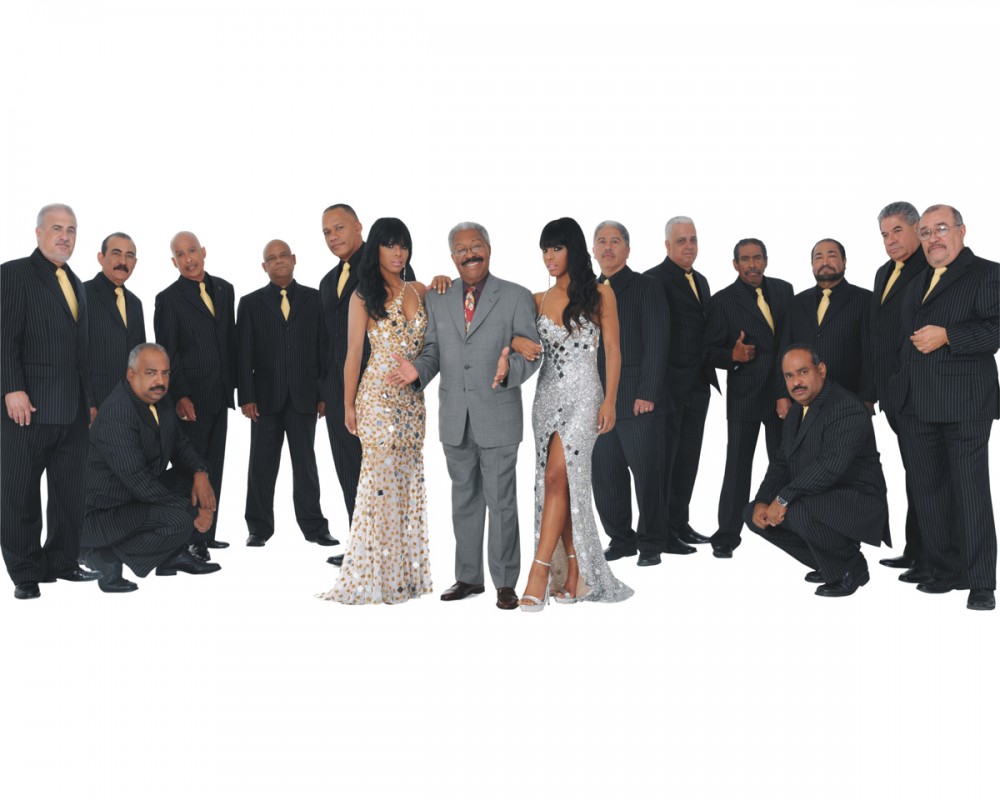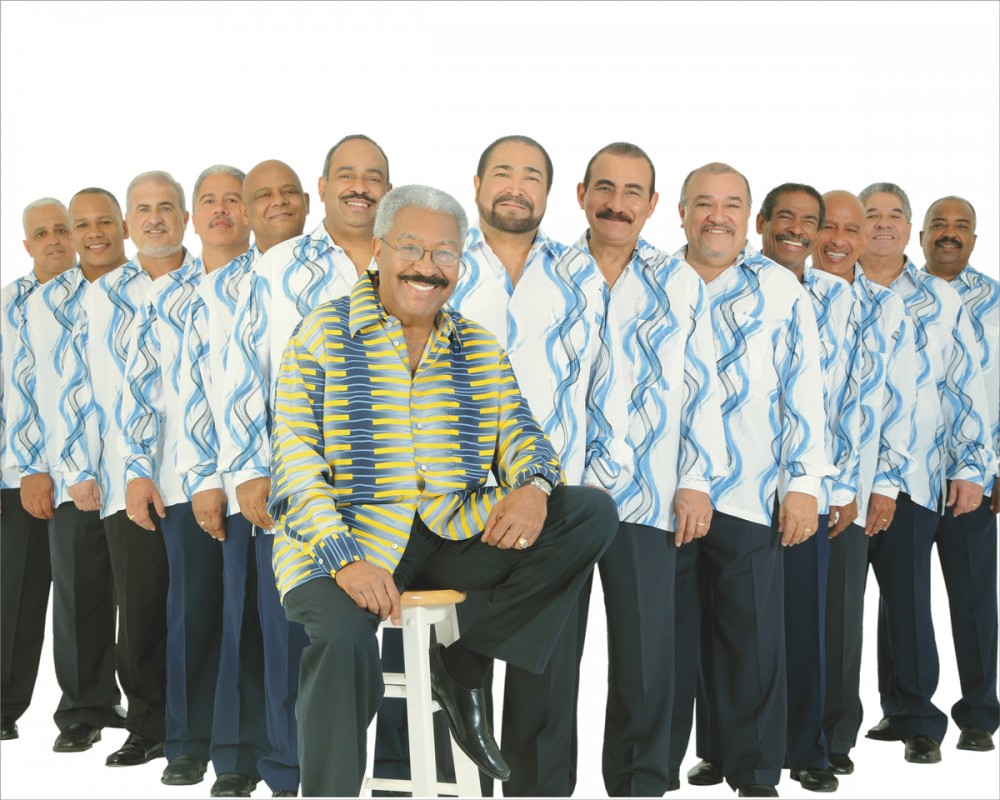El Gran Combo de Puerto Rico
Few groups have made it untouched through almost half a century, staying above fluctuations in the music industry, and without altering their rhythmic formula, like El Gran Combo de Puerto Rico.
Differently from other Salsa bands, in particular the ones to emerge from New York during the 1970s, under the umbrella of empire record label Fania, the “University of Salsa” (a moniker for the band) has protected their particular musical sound from innovations and complex experiments with jazz, plus other popular tendencies and harmonic techniques; instead always opting for keeping close to their own unique sound, simple and cadenced, and one that has constituted the group’s identity since its creation.
This is what upholds the group musical director and founder, Rafael Ithier, as he asserts that there is no difference between the El Gran Combo of yesterday and the one today, an argument that supports itself by listening to tracks like “A Ti Te Pasa Algo,” “Las Hojas Blancas,” “Ojos Chinos” or “Acángana,” all hits released by the group in 1964 that have withstood the test of time almost five decades later.
The secret is simple. To write songs about everyday topics, with intelligible arrangements, a good rhythmic section, and a lot of clave (beat), always keeping in mind what the people like without growing apart from the roots of Puerto Rican popular music. Rafael Ithier himself puts it in simple terms: “Since I don’t have a formal education in music, I cannot think about the works of Beethoven or Bach at the moment when I compose my arrangements, but instead about Chuíto (Jesús Sánchez Eraso) and Ramito (Flor Morales Ramos).”
Founded in May 26, 1962, El Gran Combo takes up an important space in the Puerto Rican and Antillean popular songbook, standing out as one of the few musical institutions to actually embody the social and historical development of our modern melody, powerfully transiting through the interpretation of rhythms like Bomba, Guaracha, Merengue, Boogaloo, Jala-jala, Bolero, Tango and, of course, Salsa.
They are, without a doubt, integral to the national and Afro Caribbean identities that fed on the rich cultural tradition of the last half of the twentieth century, and that remains strong today in 2010.
The group’s artistic contribution highlights a new era. Trained by the master hand of veteran percussionist Rafael Cortijo Verdejo, the musicians that originated El Gran Combo in 1962 were able to introduce a cadenced sound that immediately captivated the national audience, and in a short period of time, during their first decade, began to sprout those roots in stages all over the United States, Colombia, Venezuela, and Panama.
The wide range of their repertoire, the spark in their choreographies, the charisma of their group members and their ability to incorporate humorous melodies and everyday stories into their songs, were all key elements to fuel the group’s success.
It was in this way that the group founded by Rafael Ithier, Quito Vélez, Martín Quiñones, Miguel Cruz, Héctor Santos, and Eddie Pérez, alongside Milton Correa, Daniel “Maninín” Vázquez, Micky Duchesne, Chiqui Rivera, and Pellín Rodríguez took off, for their capacity to entertain and lure lovers of good music to the dance floor.
A short time after the group’s inception, and the incorporation of Roberto Roena and Andrés “Andy” Montañez, the work of El Gran Combo de Puerto Rico blasted television airwaves, constituting the first music group in the country to dominate this media.
Their public presence was impressive: for seven consecutive years they were played on the radio on a daily basis and appeared on twelve TV shows a week.
During that period, the group became the country’s greatest musical sensation. Also determining the guidelines for the development of national popular music right at the moment when the great socioeconomic transformation of the Puerto Rican society was taking place.
During their first seven years, the art of El Gran Combo was emblazoned unto productions like “Menéame Los Mangos” (1962), “El Gran Combo… De Siempre” (1963), “Acángana” (1963), “Ojos Chinos-Jala Jala” (1964), “El Caballo Pelotero” (1964), “El Swing del Gran Combo” (1965), “En Navidad” (1966), “Maldito Callo” (1967), “Esos Ojitos Negros” (1967), “Boleros Románticos” (1967), “Fiesta con El Gran Combo” (1967), “Boogaloo con El Gran Combo” (1967), “Tú Querías Boogaloo” (1967), “Pata Pata, Jala Jala, Boogaloo” (1967), “Tangos por El Gran Combo” (1968), “Merengues” (1968), “Los Nenes Sicodélicos” (1968), “Bombas” (1968), “Guarachas” (1968), “Latin Power” (1968), “Smile” (1968) and “Este Sí Que Es” (1969).
At the same time, the group’s power was felt in the music stages of New York City, where a mighty-sized colony of Puerto Ricans was making their new home.
However, the glory attained by El Gran Combo during their first few years began to decline in 1969. That year, all their radio and TV appearances were canceled, their record label, Gemma, terminated their contract, and the first significant member resignations took place, as Roberto Roena and Elías Lopés left the band and would immediately go on to form Apollo Sound.
Meanwhile, the music market turned more competitive. The further appearance of new bands with Afro Antillean sounds on the music scene, started determining the new course of popular dance music since the New York (era). The new Salsa movement, carried out primarily by the Fania Records enterprise imposed new challenges for groups that, like El Gran Combo, had previously established their dominion. However, the “Mulatos del Sabor” (translated “The Mulattos of Flavor”), weathered the storms of those times, led by the genius of Rafael Ithier. As part of the solution, they created their own record label EGC, Corp., to produce their own musical works, and hence remain a vital part of the artistic scene.
From these efforts, they yielded albums like “Estamos Primero” (1970) y “De Punta a Punta” (1971), that despite having high quality and contributing to the survival of the group, didn’t break into the market with the force that was expected.
Furthermore, they released the album “Por El Libro” (1972), followed by “En Acción” (1973) and “Número 5” (1973), which returned El Gran Combo to their pinnacle, thanks to the popularity of tracks like “Hojas Blancas”, “El Barbero Loco”, “Guaguancó de El Gran Combo”, “Julia” and, especially, “Los Zapatos de Manacho”.
The band’s taste of success during this period turned a bit bitter with the exit of vocalist Pellín Rodríguez, who, in 1973 opted instead for fueling his own solo career.
The veteran singer, interpreter of the hit “Amor Por Ti”, was initially replaced by Marcos Montañez, Andy’s younger brother, although his formal replacement wouldn’t come until the recruitment of vocalist and sonero Charlie Aponte, a young man with a splendid voice, enthusiasm and discipline, that turned out to be a triumph for the group.
Then regenerated, El Gran Combo began to shine as one of Salsa’s most important institutions in and outside Puerto Rico, branding their seal into the albums “Disfrútelo Hasta el Cabo” (1974), “Número 7” (1975), “Los Sorullos” (1975) and “Mejor Que Nunca” (1976).
It was right then, at the moment they had returned to their pinnacle, that the group suffered the exit of lead singer Andy Montañez, in 1977. Remembered as the “Niño de Trastalleres” (the Boy from Trastayeres), he accepted a seductive artistic offer to record as a solo artist and simultaneously join the lineup for the Venezuelan group, Dimensión Latina.
Andy Montañez’s decision affected the mood of most group members since, at one point; his absence seemed inconceivable, in particular because he was considered like Rafael Ithier’s “eldest son”. However, the unease of his departure was turned into encouragement, perseverance, and will to continue with a music project that had and would always be above any of its individual members.
Singer Jerry Rivas, taking on a great challenge, would have to fill the void left by Andy Montañez. However, the melodic strength that characterized this young vocalist started to seduce fans of the group, who were persuaded with the interpretations of “Buscando Ambiente”, from the album “Internacional” (1977), and “La Clave y El Bongó,” included in “En Las Vegas” (1978), the last album recorded under the EGC label.
The strength built up by El Gran Combo was poured into a full schedule of presentations in and outside Puerto Rico, leading Rafael Ithier to closing his production house and signing an agreement with Combo Records with whom the group built their most extensive catalog.
This record label released the album “Aquí No Se Sienta Nadie” (1979), which is, without a doubt the biggest gem in the group’s musical career and meant, among other victories, the dethroning of the New York Salsa invasion on the radio and the music market.
All the songs included in this album became giant hits: “Más Feo Que Yo”, “Así Son”, “Celos de Mi Compay”, “Adela”, “Nido de Amor”, “Brujería”, “Oprobio” and “Mujer Boricua”.
The list of successful productions under Combo Records continued with “Unity” (1980), “Happy Days” (1981), “Nuestro Aniversario” (1981), “La Universidad de La Salsa” (1983) and “Breaking the Ice” (1984), this last album well remembered for the hit “Carbonerito”, interpreted by back-up vocalist and dancer Luis “Papo” Rosario, central figure in the band since 1980.
Later, projects like “Innovations” (1985), “Nuestra Música” (1985) and “El Gran Combo y Su Pueblo” (1986) came about.
At the start of 1986, El Gran Combo faced a new kind of music scene. Changes in record production scales, the rise in female consumption and “new” rhythmic preferences that developed in the market, inevitably altered the harmonic concept of the “Mulatos del Sabor”.
These were the arrival years of the romantic and erotic Salsa movements that took over the genre for a bit and displaced the “old” players. Confronted with this scene, El Gran Combo opted for reinventing and “evolving” their sound, as can be heard in the album “Romántico y Sabroso” (1988).
Therefore, in order to face the challenges of the new market, Rafael Ithier embellished the group’s sound by using the technical skills of young arrangers like Ernesto Sánchez, Louis García and Lenny Prieto.
This experiment resulted in the album “¡Ámame!” (1989) which was well received by the “new” salsa audience, due in part to songs like “Ámame”, and “Aguacero”. Nevertheless, keeping the group’s new melodic line, less cadenced than the original group formula, gave way to the production of “Latin-Up” (1990), an album that went down in history like the collective’s biggest disappointment.
From then on, the veteran musician took over the direction of the arrangements and produced “Erupción” (1991), an album that rescued El Gran Combo’s rhythmic power and essence.
Shortly after, there was “First Class International” (1993), which was preceded by a compilation album celebrating the group’s 30 years. Next, the albums
“La Ruta Del Sabor” (1994), “Para Todos Los Gustos” (1995), “Por Todo Lo Alto” (1996), “Pasaporte Musical” (1998), “Nuevo Milenio, Mismo Sabor” (2001) y “40 Años En Vivo” (2002) were produced.
Entering the first decade in 2000, “La Universidad de la Salsa” took a giant leap in their musical history, as they ended their relationship with Combo Records and joined the Sony Discos multinational recording family. During this new time the most important Salsa band in the world produced the album
“Aquí Estamos y De Verdad” (2004), remembered for the hits “El Matrimonio” and “Mi Gorda Bonita”.
Yet, it wasn’t until the release of “Arroz Con Habichuela” (2006) that El Gran Combo, having completed 42 years on their trajectory, marked a new milestone in the history of salsa, becoming the most venerated group in the genre, above groups from all time and hence turning all the tracks of that production into big commercial hits.
The result from this work gave way to various important distinctions, including a GRAMMY® statue and a “Premio Lo Nuestro” Award.
With “Arroz Con Habichuela”, music master Rafael Ithier endorsed that the key to success in salsa is in the flavor of the harmonic essence given off by the clave. There, is the winning formula of this expression, the rhythmic message that distinguishes it, and of course, in the inarguable personality of El Gran Combo.
Today, at the brink of their fiftieth anniversary, “Los Mulatos del Sabor” returns charging with a new record under the Sony label, that will without a doubt repeat the success of “Arroz Con Habichuela”.
Entitled “Sin Salsa No Hay Paraíso”, it is a cadenced production; with simple and danceable arrangements that reaffirms the traditional sound of the group.
This album, number 56 in the group’s history, includes ten tracks: “Sin Salsa No Hay Paraíso”, “El Problema Está En El Coco”, “Es La Mujer”, “Achilipú”, “Colombia Tierra Querida”, “A Mí Me Gusta Mi Pueblo”, “La Espuma y La Ola”, “El Comején”, “La Receta de Amor” and “Alguien Que Me Quite Tu Amor.” They all transit among a wide range of melodies, with humorous hues, touching on social reflection and others inspired by the sweet dilemmas of love.
It is, without a doubt, the musical project that will once again take El Gran Combo to their rightful seat of fame, just as they near the celebration of their 50th anniversary.

